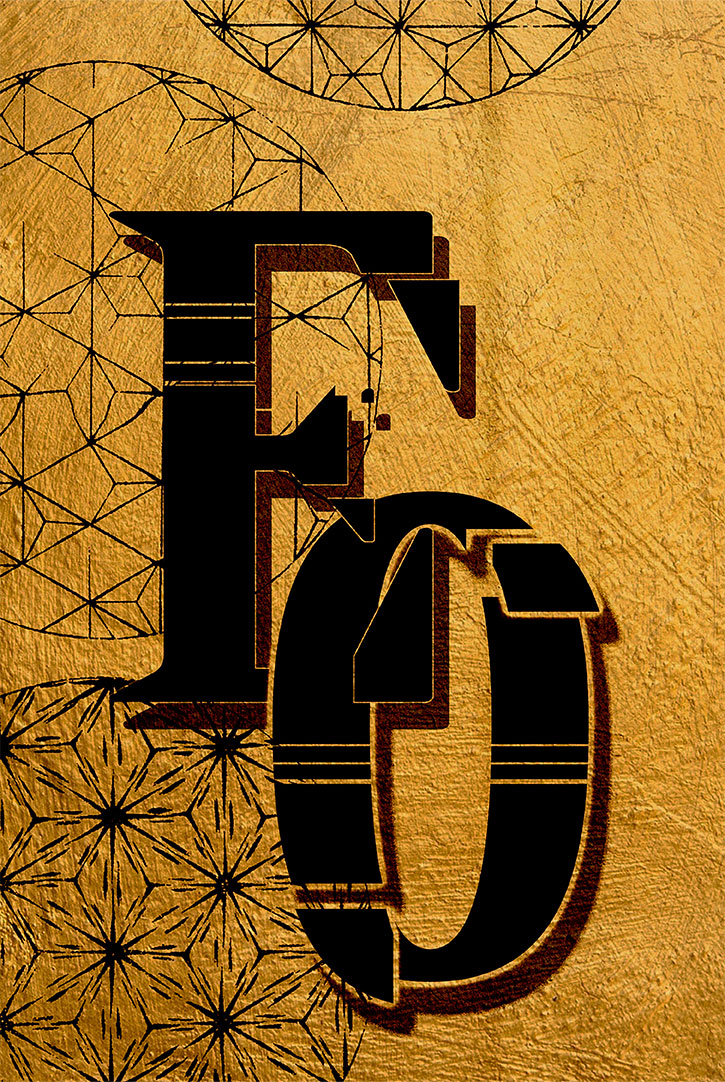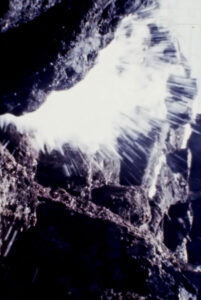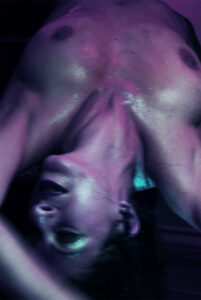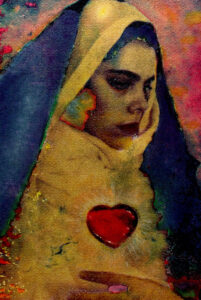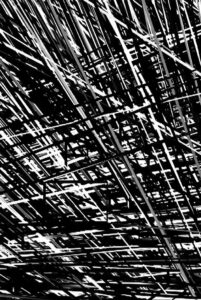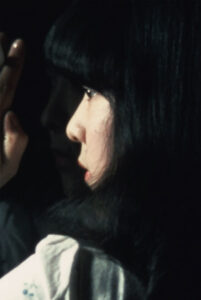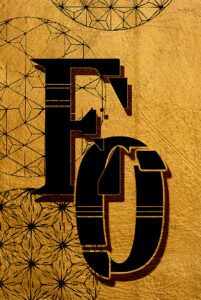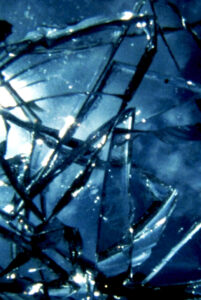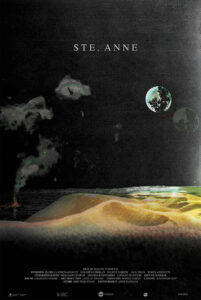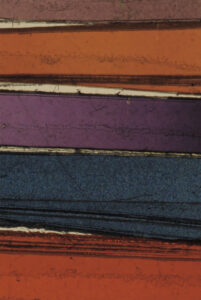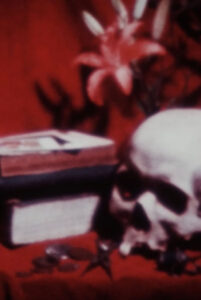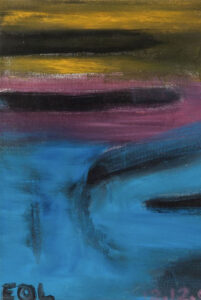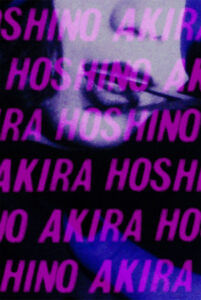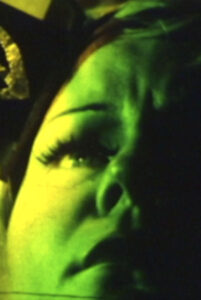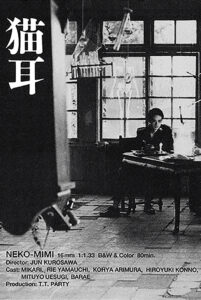Eyelight Obscura
GRANULAR FILM – BERUIT | Charles-André Coderre | 2016 | 7 min | Canada
KAUAʻI ʻOʻO | Samy Benammar | 2023 | 4 min | Canada
DANS LES CIEUX ET SUR LA TERRE | Erin Weisgerber | 2022 | 12 min | Canada
LA PRIÈRE GÉNITALE | Serge de Cotret | 2009 | 7 min | Canada
LUCINA ANNULATA | Charlotte Clermont | 2021 | 4 min | Canada
SHOW DE BLEU | Antoine Larocque & Charles Barabé | 2022 | 5 min | Canada
2020 | Jon Claude Bieschke | 2011 | 15 min | Canada
HYPNAGOGIA | Pierre-Luc Vaillancourt | 2018 | 5 min | Canada
Sometimes, in the dark of a room, we can encounter a different sort of night.
That liminal space, in which our eyelids find themselves heavy, and we can feel like we’re only blinking before a heaviness reveals that more than just a moment has passed…there are many ways to come in contact with the Outside. The night…
Speaking to the idea of a corporeal engagement with film, one might encounter confusion. How can you give yourself, bodily, the space of cinema? A two-dimensional projection, durational, ultimately only directly engaging two of five senses… technology is not needed to withdraw from the literality of a flatness. There is something beyond empathy predicated upon narrative, there is, of course, the affective capacity for the brain to map the connections one needs to find a whole body response to the flickering of images.
Is there a necessity to train this capacity? Training is one of the many ways to freedom, but maybe this same sort of dissolution can be entertained via shock. Novelty can wear off, but it can still be an entrance. An opportunity. The idea of rhythm: the sway of primordial water echoing in the arterial pathway of blood throughout the body. Biomechanical impetus might help us articulate a chain of events, but there’s more truth in the poetry of the experience. The sensation of waking up when you feel like you’re falling in a dream: this is physical, right? Did you actually fall? Probably not. Sometimes reality is a trick.
One way to consider corporeal engagement is to recognize that film itself is a material. To engage with this material insistence pushes away the idea of film as mere screen of representation. Of simulation. This has less to do with ego and more to do with letting go. When narrative is predicated on momentum alone (which, of course, the operating precedent of the persistence of vision is momentum itself) gesture does not depend on figuration.
Behind the photograph, another photograph. Another world. A simultaneous universe opening up. This is attendant, and we can exist inside of this. The film itself can help reveal this. Pull itself apart, let this outside peak through the cracks. The tension between light and dark. Cinema!
(The primal scene. A flickering insistence.)
Material intervention at a chemical level allows access to colors, to vision, that ink itself cannot. There is a difference between projection and the page, regardless of the tools set forth. The color provided by the medium of film itself only blooms towards existence in reaction to light. If we think too much about this we realize how impossible it is. Another opportunity to transcend a moment, to go beyond.
Sensation is not the same thing as stimulation. Sensation is in the body. Stimulation is from the outside. A giant glowing ball of energy that starts at the bottom of your throat and endlessly vomits outwards. Overtaking you, the idea of you. Given to something else impossible. Somewhere else. Not “transported” by narrative but rather fully dissolving into sensation.
There’s only so much one can say. The best thing about cinema, when it manages to speak in this capacity of engagement, is that description becomes excess. Imagine thinking that semantically articulating the idea of an orgasm could ever compare to having an orgasm.
But, still, there is something in this momentum. Words on a page like the frames of film or video. Meditation. Processional invocation. Ritual repetition. We see an image so many times and suddenly it stops being familiar. Our body has a question. There’s no need to phrase it. The “overwhelm” itself is adequate articulation. It’s all communication. We’ve all forgotten there are things that we can do with our eyes closed.
The edge of cinema, the film frame, the video artifact; becomes the edge of the self. Definition of an edge, a limit, but begging to be transgressed. To blur with, into, out of. What if there is no here and there? Non-euclidian vessel. Cinema as the night itself.
Post-script:
Dear Pierre-Luc,
I want to thank you for the way this program has come together. It feels like it has momentum in between your curatorial choices; the program as a whole flows and offers space. There is variation but, with repeated engagement, I find myself arriving at the same place. It is a place that I am enjoying being inside of, this opening towards the night.
Because of this, I want to speak to the larger whole, not to individual films. The films on their own speak loudly. Together, there is an act of creation. Shaped by your decisions, but ultimately creating their own space relationally. One film follows another, but together there is something larger.
This allows the program to be a reflection of what the films themselves are capable of on their own. But together they scream louder! And I want my body to scream along with them. This eternal resonance.
All the best,
M Kitchell

